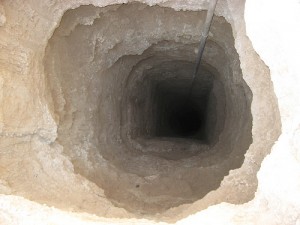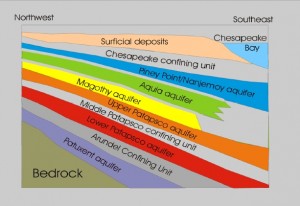Fracking or Flushing: SoMD Has Many, Many Layers

Posted by Bob Taylor Engineering
Pax Leader
 Southern Maryland’s geology is back in the news these days after a U.S. Geological Survey report identified areas in the region that could yield natural gas through hydraulic fracturing, a controversial mining process commonly known as “fracking.”
Southern Maryland’s geology is back in the news these days after a U.S. Geological Survey report identified areas in the region that could yield natural gas through hydraulic fracturing, a controversial mining process commonly known as “fracking.”
The report mentions that the Taylorsville basin, a local geological formation that lies under Charles County, could contain up to a trillion cubic feet of natural gas, an estimate that caused excitement locally among both proponents and opponents of fracking. The report did not assess the Delmarva Basin, which runs under St. Mary’s County, but said it likely contains natural gas as well.
Southern Maryland’s geology doesn’t get a lot of media attention, and it has even been wildly misrepresented. But it’s an important part of daily life here. We may not be drawing energy resources from it yet, but we do draw almost all of our drinking water. And we have to contend with its shifting, malleable clay and sand whenever we construct buildings.

This simplified map of Southern Maryland aquifers comes from a 2007 report by Calvert County government. Click on it more more of the report.
Modern wells in Southern Maryland no longer draw from the shallow groundwater layer of earth directly beneath our feet. They sink hundreds, even thousands, of feet past this layer of surface deposits to one of the region’s six aquifers. These aquifers – the Piney Point/Nanjemoy; Aquia; Magothy; Upper, and Lower Patapsco; and Patuxent – contain fossil water. This water fell as rain thousands of years ago and seeped through the rock formations, becoming clean and potable.
The rock formations mentioned in the USGS natural gas report are contained in the bedrock, which lies under the aquifers, thousands of feet below the surface. Gas miners would have to drill through the aquifers to extract the gas from the bedrock, a process that opponents say has contaminated underground water sources in other parts of the nation.
When navigating the vast underground formations that provide our water and support our buildings here in Southern Maryland, you need a guide. At Bob Taylor Engineering, we have more than 30 years of experience with test well drilling, geotechnical services and materials testing.
When you start your next building or test well drilling project, call us at 301-862-4300.























